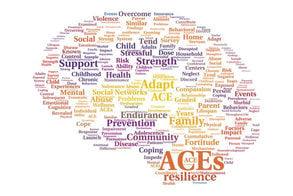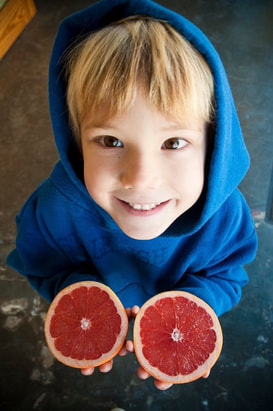 It’s not what’s wrong with you, it’s what happened to you. People consistently show up for therapy thinking they are crazy, inadequate, damaged, abnormal, intrinsically flawed, incomplete, and deficient because they are innately defective. These beliefs are actually the result of adverse childhood experiences and traumatic events. Changing this perspective from “what is wrong with you” to “what happened to you” changes the course of therapy and assists in externalizing negative experiences and cognitions. You are not innately defective. You believe these things about yourself because of a wide variety of adverse experiences that reinforce these beliefs. Need proof? CDC-Kaiser Permanente Adverse Childhood Experiences (ACE) Study is one of the largest investigations of childhood abuse and neglect and later-life health and well-being. It scores the number of adverse childhood experiences a person experiences before the age of 18. There are 10 types of childhood trauma measured in the ACE Study. Five are personal -- physical abuse, verbal abuse, sexual abuse, physical neglect, and emotional neglect. Five are related to other family members: a parent who's an alcoholic, a mother who's a victim of domestic violence, a family member in jail, a family member diagnosed with a mental illness, and the disappearance of a parent through divorce, death or abandonment. The ACE Study reveals a relationship between the number of ACEs and severity of negative health and well-being outcomes across one’s life. As the number of ACEs increases, so does the risk of alcoholism and illicit drug addiction, depression, health-related quality of life, heart disease, liver disease, poor work performance, financial stress, risk for intimate partner violence, sexually transmitted diseases, smoking, suicide attempts, early initiation of sexual activity, adolescent pregnancy, risk for sexual violence, and poor academic achievement. In a nutshell, the adverse experiences present in childhood lead to so much stress on the body and mind creating a whole slew of negative health, mental health, and addiction diagnoses later in life. Changing the focus of therapy from coping with symptoms to healing adverse childhood experience allows the present to be free from the influence of the past.
2 Comments
 My two nephews and I were running around their tiny town, playing hide and seek, exploring, and talking to neighbors. Henry, age six, found a deep pile of leaves in a church yard along a stone wall the boys were walking on and jumped in. Laughing, he kicked around in the leaves for a few minutes. When he climbed back over the wall, ants were crawling all over his calves and shins and into his socks. He panicked, swatting at his legs as tears welled in his eyes. We quickly removed his shoes and socks and brushed the ants off. His tears dried, and we resumed our journey in the direction of his parent’s small health food store where his mom was stationed behind the counter. As I got a drink from the cooler, Henry checked in with his mom and the two boys ran upstairs to play. At the counter paying for my drink, and feeling slightly guilty for allowing her son to play in an anty pile of leaves, I told Emily, my sister in law, about the ants. Emily smiled and said she’d already heard the entire story. She slid coins into the cash drawer, closed it, and we too went on with our day. But the Ant Incident stuck with me. It’s not about ants. It’s about attachment, the single most important parenting practice. More important than healthy food, organic toys, and appropriate pre-school placement. Bonding with an infant is a known practice. Hospitals promote parent and infant contact after birth. Many people recognize the importance of attachment in a person’s first years. However, attachment is a process that continues throughout the life span. A parent who is able to attune themselves to the on-going emotional needs of their child provides a secure emotional base from which the child can explore the world, knowing they have a safe emotional place to return. The connection Henry made with his mother after the Ant Incident is a perfect example of how parents can continue to provide secure attachment. After the Ant Incident Henry and his brother re-engaged and continued their jokes, ribs, and exploration back to their parents where Henry immediately sought his mother’s attention. He told her the story, she validated his fear and provided reassurance – all within a minute. He then ran off again with his older brother. A healthy attachment experience exists inside this seconds-long interaction that provided security, safety, and assurance to Henry. And let me be clear – checking Henry’s legs for ant bites is the least important part of this interaction. The secure attachment between Henry and his mother is exemplified by Henry telling a story about a scary incident to his attachment figure, her listening, nodding in understanding, asking if he is okay, giving a quick hug and putting right to the world. It was focused attention, full engagement, and calm, kind words that happened in a matter of a minute on a typical day in this family’s life. Anxiety, fear, worry, sadness, depression - difficult emotions that can be overwhelming. Focusing all the attention of all your senses on an orange can help lessen the immediate trouble of these emotions and leave your brain ready to move on to its next task.
Go to the kitchen, the grocery store, the corner store, your friend’s house and get an orange (you like lemons? Have at it). Look at the orange. Notice the color - deep orange, orange becoming reddish purple in the case of a blood orange, or maybe light orange. Notice the size and shape. Hold the orange in your hand. Feel the size and weight of it. If it’s small it may lie perfectly in your palm. If it is large, as is often a navel orange, it may feel unruly. Rub your thumb and fingers along the rind or skin. Probably it is cooler than room temperature. The skin is not smooth. How would you describe the texture of the skin? The color and texture may be indicative of the orange’s age. On the top of the orange, the plant stalk or pedicel. It’s rough, green and brown. An umbilicus I suppose. The bottom of the orange, opposite the pedicel, is what I’ll call the knot. What do you want to call it? You’ve eaten an orange before. You can imagine the inside. Imagine the sinew of pith from the pedicel to the knot with the orange sections grown symmetrically side by side. Encased in the yellow white bitter pith. Raise the orange to your nose and smell it. How do you describe the scent? It’s time to open it up. How are you going to do that? You can push a finger nail inside the orange’s skin – tough? Thick? Thin? Raise the orange to your nose and smell where you cut into the skin. Is the smell faint? Sweet? Or something else? Start peeling the orange. Again, notice the thickness of the skin, the amount of pith. Experience the peeling. Explain the peeling – out loud or just in your head. . Once the peel is removed, look at the pile of it on the table. Does it remind you of anything? Note mentally if it does and then return to your orange. Now the pith. Pith that is thin usually sits tight on the orange and is difficult to remove. What is your experience? Is there pith under your fingernails? Some people will just eat the orange without removing the pith. Hmmm. What do you do? Look at, perhaps admire, your orange. What is the color now? At this point you have probably noted whether it is a juicy or dry orange. Put your thumbs into the hole at the top of your orange where the sections meet and pull them apart. Do the sections come apart easily or do they tear? Notice the size of the cells in the sections. Maybe bigger cells have less taste? Just notice that. . Put a section in your mouth. Notice all the different tastes and flavors – it’s probably not salty but likely has a mixture of sweet, sour, and bitter tastes. Notice what taste is most prominent. Is the orange good? Do you want to finish eating it? If not – trash, compost, side of the road. If so – mouth. Of course you’re noticing how your teeth crushes and grinds the orange pieces moved into place by your tongue. Keep noticing the flavor, scent, sticky fingers, color. Now the edible part of your orange is gone (though I’ve seen just one person eat the entire orange – peel and pith included). Look at your empty peel. What does it look like? . One of my pieces of pith looks like a jellyfish. At this point you feel better. Your difficult emotions are at bay, and your brain is ready for work, learning, play. Your orange experience doesn’t have to end yet. The peel will retain its smell for a while. Put it in a small baggie and take it with you. If you begin to have distressing emotions again (you probably will – who doesn’t?) take out the baggie and smell the peel – if you are in public it looks like you’re just having a snack. Notice if the smell has changed and recall experiencing your orange. |
Details
Renew BlogDiscover your best self Archives
December 2021
Categories
All
|


 RSS Feed
RSS Feed